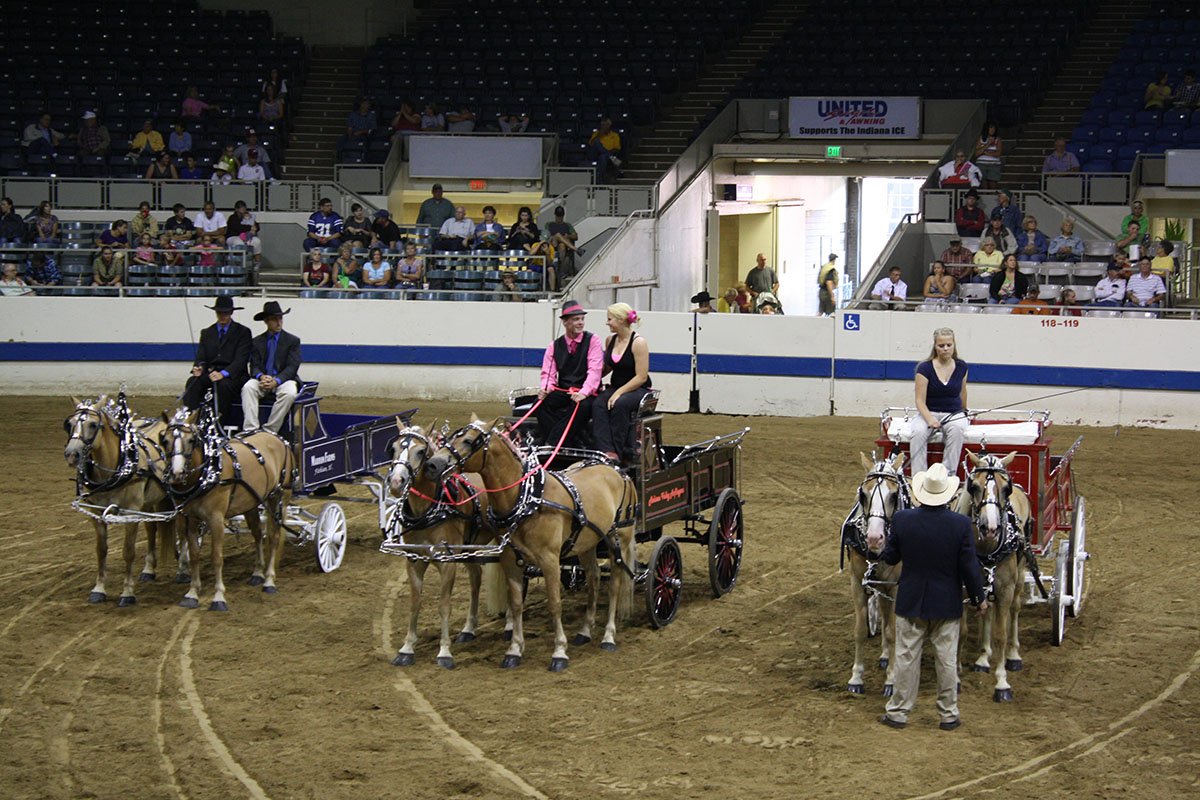29. State Fair Keeps Alive Hoosier Traditions
James Glass
Column that appeared in the Indianapolis Star onIn an era in which some Hoosier traditions are fading, the Indiana State Fair keeps alive experiences that Indiana residents have shared for generations. People from all over the state get together and for 12 days see and enjoy Indiana agriculture, industry, food, arts and crafts, and entertainment.
The first fair of 1852, held in what is now Military Park downtown, featured samples of the best livestock and summer crops in the state, agricultural implements and machinery, exhibitions of horses, and horse racing. No amusement stands or sideshows were permitted on the fairgrounds, but lined the streets outside. Visitors at the 150th State Fair this year will find many of the same activities, updated over time and joined by many additional traditions. Agriculture is still at the core of the fair, and today's farmers and their children continue to compete for prize ribbons awarded for dairy and beef cattle, draft and saddle horses, swine, sheep, poultry, rabbits, and mules. The center of the 250-acre fairgrounds at 1202 East 38th Street continues to be the south side of Main Street, lined with livestock buildings and the monumental Pepsi Coliseum. There the non-farming visitors who make up most of the 800,000 attendees learn about Indiana agriculture, admire the best pure-bred farm animals in the state, and watch exhibitors show off their immaculately groomed entries as judges in the Coliseum evaluate the potential champions. A favorite show during the second week of the fair involves the competition of Clydesdale and Percheron draft horses pulling wagons, carts, and buggies, announced by fair regular Phil Deckard and accompanied by June Marie Brune on an electric organ.
Horse racing enthusiasts continue to favor harness racing on the main dirt track of the fairgrounds, and State Fair races are part of the Grand Circuit dating back over a hundred years. Farmers still make a point of visiting the newest combines, tractors, and cultivators on Machinery Field north of the main track, but Fair executive director Cindy Hoye says that today's farmers tend to see the machinery and farm-related activities as opportunities to showcase Indiana agriculture and remind visitors of its importance. One way in which farming traditions are highlighted is through the exhibits of antique tractors, buildings, and crafts at the Pioneer Village at the northeast corner of the grounds. Another is through the baked goods, family crafts, and art that children and adults exhibit in the Home and Family Arts Building, originally the Women's Building.
Visitors are also attracted by the Midway rides and side shows, operating at the west end of the grounds, and by the fair food, some of it served by the Hog, Beef Cattle, and Dairy Associations, and the rest by street vendors. Entertainment is another staple that draws Hoosiers to the fair, ranging from Hollywood celebrities such as Bob Hope, Marjorie Main, and Roy Rogers, to popular singers, such as the Beatles, Andy Williams, Vince Gill, and this year's Kanye West.
Finally, Hoye says that visitors appreciate the historic buildings and traditional lay out of the fair grounds. The Art Deco Coliseum of 1939; the Swine Barn of 1923, with its hog's head sculptures; the rambling Cattle Barn of 1924; the Italian-style Ball State Agriculture and Horticulture Building of 1930, and the wooden race horse barns all are familiar structures that draw people in. Recognizing the importance of such buildings, the State Fair Commission and the Indiana General Assembly have spent over $60 million during the past decade and a half in restoration and renovation.

Horse-Drawn Wagon Competition, State Fair Coliseum, 2012. James Glass.
